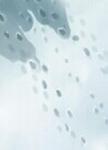版权所有:内蒙古大学图书馆 技术提供:维普资讯• 智图
内蒙古自治区呼和浩特市赛罕区大学西街235号 邮编: 010021

作者机构:Guilin Univ Elect Technol Sch Comp & Informat Secur Guilin 541004 Peoples R China
出 版 物:《IEEE TRANSACTIONS ON MULTIMEDIA》 (IEEE Trans Multimedia)
年 卷 期:2025年第27卷
页 面:2530-2542页
核心收录:
学科分类:0810[工学-信息与通信工程] 0808[工学-电气工程] 08[工学] 0835[工学-软件工程] 0812[工学-计算机科学与技术(可授工学、理学学位)]
基 金:National Natural Science Foundation of China [62462017, 82272075] Guangxi Key Research and Development Project [AB21220037] Open Project of Guangdong Provincial Key Laboratory of Artificial Intelligence in Medical Image Analysis and Application [2022-MKF-01]
主 题:Degradation Kernel Image reconstruction Estimation Superresolution Adaptation models Contrastive learning Iterative methods Feature extraction Analytical models Unknown image super-resolution contrastive learning convolutional neural networks degradation maps
摘 要:Most existing super-resolution (SR) methods assume that the degradation is fixed (e.g., bicubic downsampling), whereas their performance would be degraded if the actual degradation differs from this assumption. To deal with unknown degradations, existing unknown SR methods are committed to learning degradation representation to generate high-resolution images. Nevertheless, they ignore that the impact of degradations on images is related to image content, or they learn degradation representations without any constraints. In this article, we propose a degradation maps extractor for unknown SR. Specifically, we learn degradation maps and condense them into a one-dimensional representation space to distinguish various degradations, which obtains distinguishable degradation maps and preserves the connection with the image contents. Furthermore, we propose a degradation map-guided SR (DMGSR) network, in which the degradation maps adaptively influence the SR process by applying channel attention and spatial attention to middle features. With the cooperation of the degradation maps extractor and the degradation maps-guided SR network, our network can flexibly handle various degradations. Experimental results show that our model achieves state-of-the-art performance in quantitative and qualitative metrics for the unknown SR task.